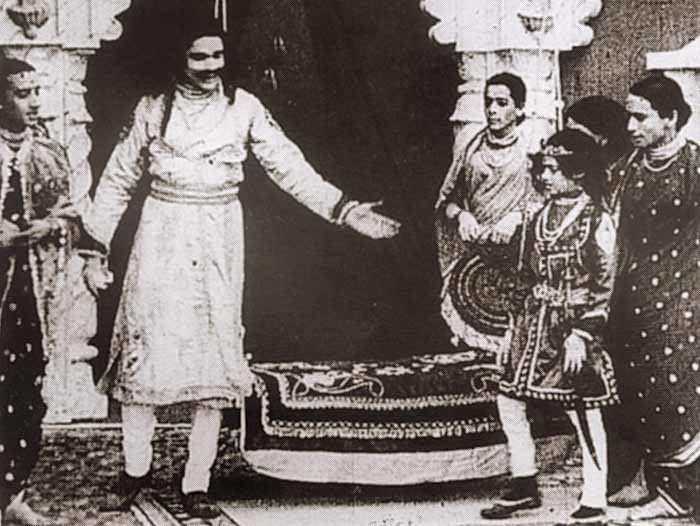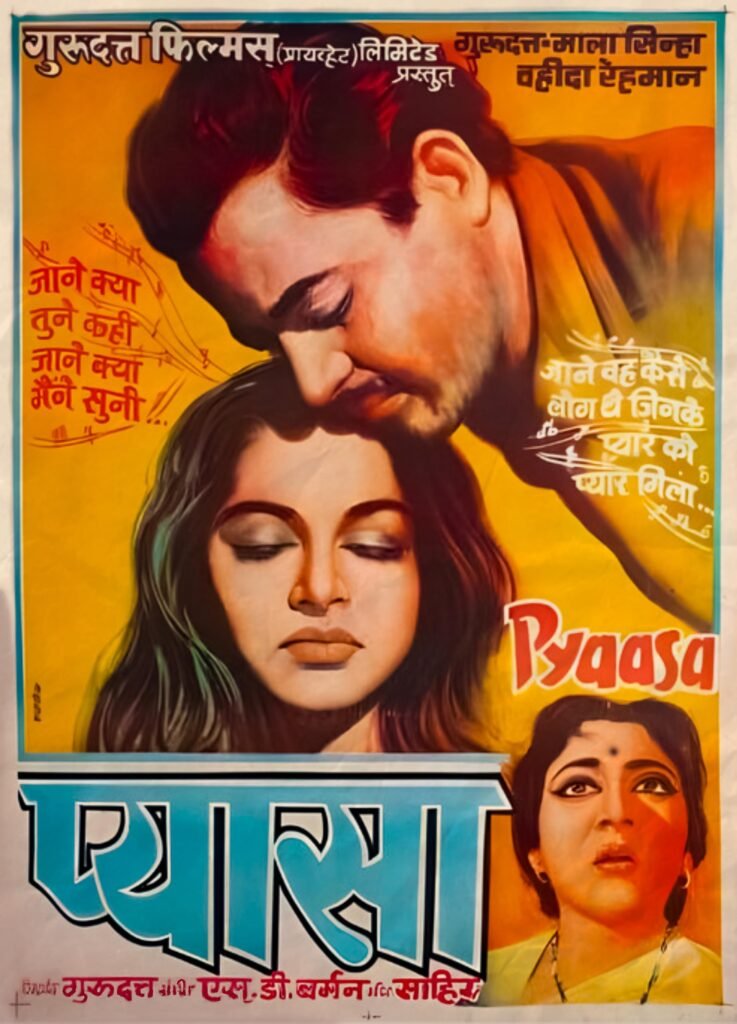Bollywood is an Indian Hindi language film industry based in Mumbai (Bombay). The first full-length Indian movie, “Raja Harishchandra”, directed by Dadasaheb Phalke was released on 3 May 1913. This film is often called the birth of Indian cinema. Calculating from 1913 to 2024, it is almost 111 years. It means Bollywood is 111 years old.
Here are some of the most iconic movies in the history of Bollywood that have played an important role in the growth of Indian cinema.
Table of Contents
1. Raja Harishchandra (1913)

India’s first-ever full-length movie was “Raja Harishchandra”. This film was released on May 3, 1913. We can say that the journey of Bollywood started with “Raja Harishchandra.” The Film was directed by the legend Dadasaheb Phalke and it was a silent film.
This film revolves around King “Harishchandra”, King Of Ayodhya. During that era, there were no female actresses so males used to perform female roles. In this movie, Anna Salunke is cast as Taramati, Raja Harishchandra’s wife. This film laid the foundation of Bollywood in the true sense.
2. Alam Ara (1931)

Directed by Ardeshir Irani and released in 1931, “Alam Ara” was the first-ever Indian movie to feature a soundtrack, making a historical transition from silent films to talkies in Indian cinema.
This movie is about a king and his two wives. Who are childless. It follows their efforts and struggles as they try to have a child who can become the next king.
3. Kisan Kanya (1937)

“Kisan Kanya” was India’s first indigenously made color film. The film was released in 1937 and directed by Moti Gidwani. As the first color film, this film brought a visual revolution to Indian cinema, offering viewers a new experience.
Other color films were released back in the day but were made abroad. This was the first completely indigenously color film.
4. Do Bigha Zameen (1953)

“Do Bigha Zammen” film holds a special place in the legacy of Bollywood as it was the film that inaugurated the prestigious Filmfare Awards. Released in 1953, the film was directed by Bimal Roy.
This film is about a poor farmer’s struggle to save his land in drought. This is the first movie that won the first Filmfare award.
5. Shyamchi Aai (1953)

The film “Shyamchi Aai” was released in 1953 and directed by Acharya Atre. This movie became a landmark in Marathi cinema. This is an autobiographical film, based on the life of a great writer “Sane Guruji” who had a profound positive impact on the Marathi film industry.
It won the award for Best Film at the National Film Awards (NFA).
6. Pyaasa (1957)

“Pyaasa,” a film directed by Guru Dutt and released in 1957, is widely regarded as one of the greatest films ever made. This Indian film frequently appears on lists of the greatest films in world cinema.
7. Mother India (1957)

Released in 1957, directed by Mehboob Khan, “Mother India” holds the credit of being the first-ever Indian film to be nominated for an Academy Award (Oscar) in the Best Foreign Language Film category.
At that time, this was the most expensive film production, and they earned the highest revenue for any Indian film at that point. This film showcased the spirit of India in front of the entire world.
Conclusion
These films are not just milestones in the history of Bollywood but they are important building blocks of an entire industry. With time, each film broke barriers, introduced innovation, and set entirely new standards.
What we see today as Bollywood, is because of these films. Their contributions are very remarkable and unforgettable. Let’s revive these legendary films together.
What is the first Bollywood movie?
India’s first-ever full-length movie was “Raja Harishchandra”. This film was released on May 3, 1913.
What is the first movie to win a Filmfare Award?
Do Bigha Zameen released in 1953 won the first Filmfare Award.
The visual materials used in posts, including movie posters and profile pictures, are intended to represent the associated movies and TV shows under fair use guidelines for informational purposes only. We collect this information from social media platforms such as Instagram, Twitter, and Facebook, and strive to use only official materials made publicly available by the copyright holders.
